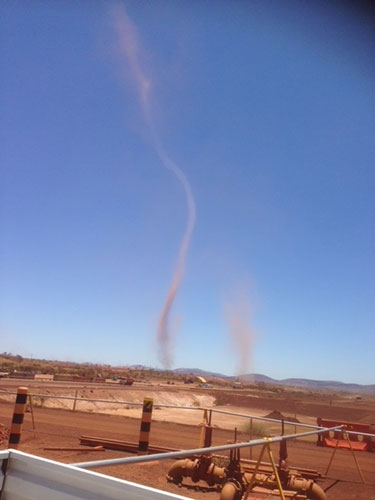 Dust control is a critical concern in the construction, mining, and agricultural sectors in Australia. It poses significant health risks to workers and nearby communities and impacts the environment, community health and project efficiency. Two commonly discussed methods of managing dust are dust suppression and dust mitigation. While they may sound similar, understanding their differences and applications is essential for effective dust control. This article looks at the two approaches and how AggreBind Australia’s advanced long-string cross-linking copolymer technology offers effective results for both dust suppression and dust mitigation in Australian projects, industries and communities.
Dust control is a critical concern in the construction, mining, and agricultural sectors in Australia. It poses significant health risks to workers and nearby communities and impacts the environment, community health and project efficiency. Two commonly discussed methods of managing dust are dust suppression and dust mitigation. While they may sound similar, understanding their differences and applications is essential for effective dust control. This article looks at the two approaches and how AggreBind Australia’s advanced long-string cross-linking copolymer technology offers effective results for both dust suppression and dust mitigation in Australian projects, industries and communities.
Dust Suppression: Tackling Dust at Its Source
The causes of dust range from naturally loose or unbound soils to construction projects and demolition teardowns to tailings and stockpiles.
Dust suppression refers to the methods and techniques used to directly prevent dust particles from becoming airborne, also called fugitive dust. The primary objective is to control dust generation at its source, including:
- Water Spraying: One of the most common methods, it uses water trucks or sprinkler systems to keep dusting surfaces wet, reducing dust emissions. While effective for a short period, it requires frequent and often daily applications, high water consumption, increased carbon emissions and reduced life span of tyres by up to 50%, causing increased maintenance expenses. Additionally, ambient dust infiltrates the gears and mechanics of equipment and vehicles, shortening it’s life expectancy.
- Hydrophilic Chemicals: These are typically calcium chloride and magnesium chloride. These chloride-based chemistries are known to harm vegetation and soil, and inhalation contributes to respiratory depression.
- Topical Dust Suppression with AggreDust: Applied topically to create a durable matrixed crust on either loosely bound or compacted soils, preventing dust particles from becoming airborne, and providing immediate dust control. Unlike water spraying, an AggreDust solution remains effective for a longer period, even in the harsh Australian climate.
- Dust Mitigation with AggreBind: Beyond immediate suppression, AggreBind’s long-string cross-linking copolymer technology enhances soil stability and structural integrity reducing future dust problems and contributing to sustainable land management. AggreBind’s environmentally friendly, non-toxic and non-hazardous dust control products can be integrated into site design, landscaping, and land rehabilitation, providing a more comprehensive and long-lasting approach to dust mitigation. The use of AggreBind not only controls dust but also improves soil quality, supports vegetation growth, to reduce the environmental footprint of construction and mining projects.
Dust Mitigation with AggreBind Australia: A Broader Approach
Dust mitigation encompasses dust suppression and includes strategies and measures designed to minimise the spread and impact of dust over time. It involves a more comprehensive approach to managing dust throughout the lifecycle of a project. Working directly with our clients, AggreBind Australia’s dust mitigation strategies consider:

- Site Design and Planning: Effective planning can significantly reduce dust generation. Capping stockpiles, tailings piles, berms and slopes with AggreDust to protect from wind and erosion can help minimise dust in Australia’s vast construction and mining sites.
- Vegetation and Landscaping: Planting vegetation can stabilise soil and reduce dust generation. An AggreDust topical treatment enables moisture retention and seeding, aides germination for grass, shrubs, and trees to act as natural barriers, effectively trapping dust particles and preventing them from becoming airborne.
- Long-term Stability: AggreBind’s patented technology provides long-lasting soil stabilisation, reducing the need for frequent maintenance and reapplications. By creating a durable, water-resistant surface, AggreBind products ensure that dust control measures remain effective for extended periods, translating to fewer disruptions, reduced maintenance expenses and sustained environmental benefits.
- Regulatory Compliance and Sustainability Goals: AggreBind helps meet stringent environmental regulations and supports the achievement of Sustainable Development Goals (SDGs). Our products are designed and independently tested to be environmentally friendly, non-toxic, non-hazardous and non-leaching. Using AggreBind products reduces the carbon footprint of construction and mining operations and promotes sustainable land use and responsible water use, ensuring compliance with Australian environmental standards and aligning with global sustainability initiatives.
AggreBind Australia’s Solutions for Dust Control
Effective dust control is essential for protecting worker health, maintaining environmental quality, and ensuring project efficiency. Understanding the differences between dust suppression and dust mitigation allows for the implementation of appropriate strategies tailored to specific project needs. AggreBind Australia stands out in the industry because of our relationship-based approach. We don’t just sell products and maintenance schedules; we collaborate closely with our clients to develop comprehensive strategies that align with their goals and ensure successful outcomes.
Our team works hand-in-hand with you to understand your unique challenges and objectives. This deep partnership allows us to create tailored solutions that not only address immediate dust control needs but also contribute to long-term environmental sustainability and operational efficiency. By integrating AggreBind’s innovative polymer technology into a comprehensive dust control plan, construction and mining operations across Australia can achieve a cleaner, safer, and more sustainable future.
Ready to embrace sustainable and rapid development of infrastructure in Australia? Contact our Australian team and let us show you how you can transform your next project.



